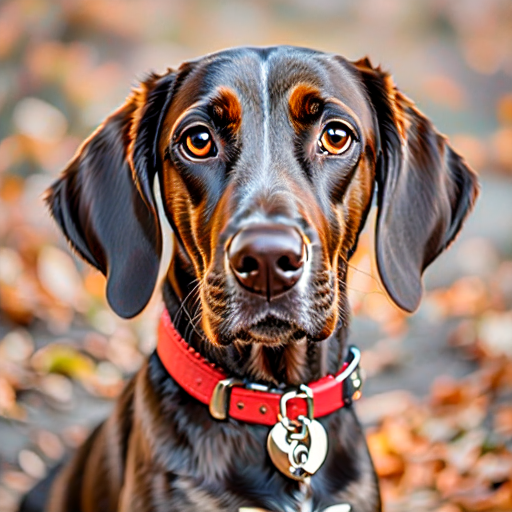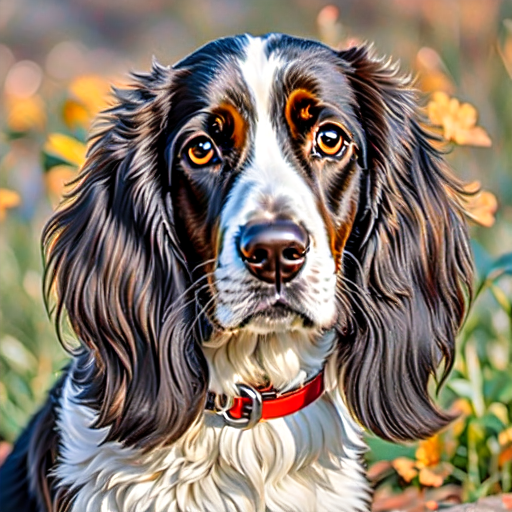Introduction Hunting Dog Breeds
Hunting has been a fundamental part of human survival for thousands of years, and throughout history, dogs have played a crucial role in this activity. Hunting dogs are bred for their keen senses, agility, and intelligence, making them invaluable companions for hunters. Whether you’re tracking game, retrieving waterfowl, or flushing out birds, there’s a hunting dog breed that’s perfect for the job. In this comprehensive guide, we’ll explore the top hunting dog breeds, their unique characteristics, and what makes them stand out in the field.
1. Labrador Retriever: The Versatile Hunter

Overview
The Labrador Retriever is one of the most popular dog breeds in the world, and for good reason. Known for their friendly demeanor and intelligence, Labs are also exceptional hunting dogs, particularly for waterfowl retrieval.
Key Characteristics
- Size: Medium to large, weighing between 55-80 pounds.
- Coat: Short, dense, and water-resistant.
- Color: Black, yellow, or chocolate.
- Temperament: Friendly, outgoing, and highly trainable.
Why They’re Great for Hunting
Labrador Retrievers have an innate love for water, making them ideal for duck hunting. Their strong retrieving instinct and soft mouth ensure that game is brought back without damage. Labs are also highly adaptable, excelling in various hunting environments, from marshes to fields.
Training Tips
- Start training early to harness their natural retrieving instincts.
- Use positive reinforcement techniques to keep them motivated.
- Introduce them to water at a young age to build confidence.
2. German Shorthaired Pointer: The All-Purpose Hunter

Overview
The German Shorthaired Pointer (GSP) is a versatile hunting dog breed known for its ability to hunt both upland game and waterfowl. Their keen sense of smell and boundless energy make them a favorite among hunters.
Key Characteristics
- Size: Medium to large, weighing between 45-70 pounds.
- Coat: Short and dense, providing protection in various terrains.
- Color: Liver, black, or a combination of both with white markings.
- Temperament: Intelligent, energetic, and eager to please.
Why They’re Great for Hunting
GSPs are known for their stamina and versatility. They can point, retrieve, and track game, making them suitable for a wide range of hunting activities. Their strong prey drive and excellent nose make them particularly effective in locating game.
- Provide plenty of physical and mental stimulation to keep them engaged.
- Use consistent commands to reinforce desired behaviors.
- Socialize them early to ensure they get along with other dogs and people.
3. Beagle: The Scent Hound Extraordinaire
Overview
Beagles are small to medium-sized dogs known for their exceptional sense of smell and tracking abilities. Originally bred for hunting hare, Beagles are now used for various types of game, including rabbits and deer.
Key Characteristics
- Size: Small to medium, weighing between 20-30 pounds.
- Coat: Short and easy to maintain.
- Color: Tri-color (black, white, and tan) or lemon and white.
- Temperament: Friendly, curious, and determined.
Why They’re Great for Hunting
Beagles have an incredible sense of smell, second only to the Bloodhound. Their small size allows them to navigate dense underbrush, making them excellent for tracking small game. Their persistent nature ensures they stay on the trail until the job is done.
- Focus on scent training to enhance their natural tracking abilities.
- Use a firm but gentle approach, as Beagles can be stubborn.
- Keep training sessions short and engaging to maintain their interest.
4. English Springer Spaniel: The Flushing Specialist
Overview

The English Springer Spaniel is a medium-sized breed known for its ability to flush game from dense cover. Their boundless energy and enthusiasm make them a favorite among bird hunters.
Key Characteristics
- Size: Medium, weighing between 40-50 pounds.
- Coat: Medium-length, wavy, and weather-resistant.
- Color: Liver and white or black and white.
- Temperament: Friendly, intelligent, and eager to please.
Why They’re Great for Hunting
Springer Spaniels excel at flushing game, particularly birds, from thick cover. Their agility and speed allow them to navigate difficult terrain with ease. They are also excellent retrievers, making them a well-rounded hunting companion.
- Start with basic obedience training before moving on to hunting-specific tasks.
- Use positive reinforcement to encourage desired behaviors.
- Expose them to different environments to build confidence and adaptability.
5. Bloodhound: The Tracking Master
Overview
The Bloodhound is a large breed known for its unparalleled tracking abilities. With a sense of smell that is second to none, Bloodhounds are often used in search and rescue operations as well as hunting.
Key Characteristics
- Size: Large, weighing between 80-110 pounds.
- Coat: Short and dense, with loose skin that forms wrinkles.
- Color: Black and tan, liver and tan, or red.
- Temperament: Gentle, affectionate, and determined.
Why They’re Great for Hunting
Bloodhounds have an extraordinary sense of smell, capable of tracking scents over long distances and even days after the trail has gone cold. Their determination and focus make them ideal for tracking large game, such as deer or wild boar.
- Focus on scent training from an early age to develop their tracking skills.
- Use a long leash during training to allow them to follow scents without getting lost.
- Be patient, as Bloodhounds can be independent and may take longer to train.
6. Brittany: The Energetic Bird Dog
Overview

The Brittany, often referred to as the Brittany Spaniel, is a medium-sized breed known for its high energy and excellent bird-hunting skills. They are particularly popular among upland bird hunters.
Key Characteristics
- Size: Medium, weighing between 30-40 pounds.
- Coat: Medium-length, flat or wavy, and dense.
- Color: Orange and white, liver and white, or tricolor.
- Temperament: Energetic, intelligent, and affectionate.
Why They’re Great for Hunting
Brittanys are known for their speed and agility, making them excellent at flushing and retrieving game birds. Their keen sense of smell and natural pointing instinct make them a valuable asset in the field.
Training Tips
- Provide plenty of exercise to keep them physically and mentally stimulated.
- Use positive reinforcement to encourage desired behaviors.
- Start training early to take advantage of their natural instincts.
7. Weimaraner: The Gray Ghost
Overview
The Weimaraner, also known as the “Gray Ghost,” is a large breed known for its sleek appearance and exceptional hunting skills. Originally bred for hunting large game, Weimaraners are now used for a variety of hunting activities.
Key Characteristics
- Size: Large, weighing between 55-85 pounds.
- Coat: Short and smooth, with a distinctive gray color.
- Color: Shades of gray, from mouse-gray to silver-gray.
- Temperament: Intelligent, energetic, and loyal.
Why They’re Great for Hunting
Weimaraners are versatile hunters, capable of tracking, pointing, and retrieving game. Their speed and endurance make them well-suited for hunting in various terrains, from forests to open fields.
Training Tips
- Start training early to establish a strong bond and good behavior.
- Use consistent commands and positive reinforcement.
- Provide plenty of exercise to keep them happy and healthy.
8. Vizsla: The Hungarian Hunter
Overview
The Vizsla is a medium-sized breed known for its striking golden-rust color and exceptional hunting abilities. Originally bred in Hungary, Vizslas are versatile hunters, excelling in both upland game and waterfowl hunting.
Key Characteristics
- Size: Medium, weighing between 45-65 pounds.
- Coat: Short and smooth, with a distinctive golden-rust color.
- Color: Golden rust.
- Temperament: Affectionate, energetic, and highly trainable.
Why They’re Great for Hunting
Vizslas are known for their speed, agility, and keen sense of smell. They are excellent pointers and retrievers, making them well-suited for a variety of hunting activities. Their affectionate nature also makes them great family pets.
Training Tips
- Use positive reinforcement to encourage desired behaviors.
- Provide plenty of exercise to keep them physically and mentally stimulated.
- Start training early to take advantage of their natural instincts.
9. Chesapeake Bay Retriever: The Waterfowl Specialist
Overview
The Chesapeake Bay Retriever, or “Chessie,” is a large breed known for its exceptional waterfowl hunting skills. Bred to retrieve game in the icy waters of the Chesapeake Bay, Chessies are tough, resilient, and highly skilled.
Key Characteristics
- Size: Large, weighing between 55-80 pounds.
- Coat: Thick and oily, providing excellent protection against cold water.
- Color: Shades of brown, sedge, or deadgrass.
- Temperament: Intelligent, independent, and protective.
Why They’re Great for Hunting
Chessies are known for their strength and endurance, making them ideal for retrieving waterfowl in harsh conditions. Their thick, oily coat provides excellent insulation, allowing them to work in cold water for extended periods.
Training Tips
- Start training early to establish a strong bond and good behavior.
- Use consistent commands and positive reinforcement.
- Introduce them to water at a young age to build confidence.
10. Irish Setter: The Elegant Hunter
Overview
The Irish Setter is a medium to large breed known for its striking red coat and elegant appearance. Originally bred for bird hunting, Irish Setters are known for their speed, agility, and keen sense of smell.
Key Characteristics
- Size: Medium to large, weighing between 60-70 pounds.
- Coat: Long and silky, with a distinctive red color.
- Color: Mahogany or chestnut red.
- Temperament: Friendly, energetic, and intelligent.
Why They’re Great for Hunting
Irish Setters are excellent bird dogs, known for their ability to locate and point game. Their speed and agility make them well-suited for hunting in open fields, and their friendly nature makes them great companions.
Training Tips
- Use positive reinforcement to encourage desired behaviors.
- Provide plenty of exercise to keep them physically and mentally stimulated.
- Start training early to take advantage of their natural instincts.
Conclusion
Choosing the right hunting dog breed depends on the type of game you hunt, the terrain you’ll be working in, and your personal preferences. Each breed has its unique strengths and characteristics, making them suitable for different hunting scenarios. Whether you’re looking for a versatile retriever like the Labrador, a scent-tracking expert like the Bloodhound, or a flushing specialist like the English Springer Spaniel, there’s a hunting dog breed that’s perfect for your needs.
Remember, training and socialization are key to developing a successful hunting dog. Start early, be consistent, and use positive reinforcement to bring out the best in your canine companion. With the right breed and proper training, you’ll have a loyal and skilled hunting partner by your side for many seasons to come.
Final Thoughts
Hunting dogs are more than just tools for the hunt; they are loyal companions, trusted partners, and beloved members of the family. By understanding the unique qualities of each breed, you can make an informed decision and find the perfect hunting dog to suit your needs. Happy hunting!
One Response